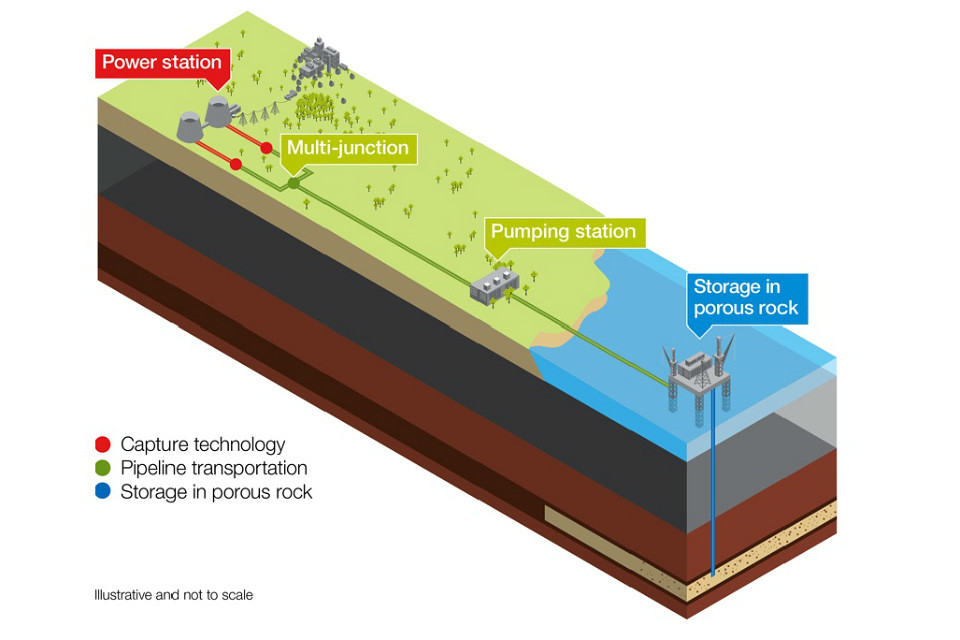Research shows ramping up carbon capture could be key to mitigating climate change
December 9, 2019

As the world gathers in Madrid to discuss how to reduce greenhouse gas emissions to fight climate change, a newly released study makes the case that trapping emissions underground could go a long way toward solving the problem.
The study – from The University of Texas at Austin, the Norwegian University of Science and Technology and the Equinor Research Centre – looks at the technology of carbon capture and storage (CCS), which is a method of capturing carbon dioxide from industrial and power plants and storing it more than a mile underground within tiny spaces in the rock.
The United Nation’s Intergovernmental Panel on Climate Change (IPCC) has stated that CCS needs to achieve 13% of the world’s necessary emission reductions by 2050. Some policy-makers, industry representatives and nongovernment organizations are dubious that CCS can meet its portion of the goal, but the new study published in Nature Scientific Reports shows that CCS could achieve its targets.
“With this paper, we provide an actionable, detailed pathway for CCS to meet the goals,” said coauthor Tip Meckel of UT’s Bureau of Economic Geology. “This is a really big hammer that we can deploy right now to put a dent in our emissions profile.”
The paper looks at the amount of geological space available in formations that is likely suitable to hold greenhouse gas emissions, keeping them from the atmosphere. It also calculates the number of wells needed worldwide to reach the IPCC’s 2050 goal.
It concludes there is easily enough space in the word’s nearshore continental margins to meet the IPCC’s goal of storing 6 to 7 gigatons of carbon dioxide a year by 2050, and that the goal could be achieved by installing 10,000 to 14,000 injection wells worldwide in the next 30 years.
That may sound like a lot of wells, but the researchers point out that the oil and gas industry has already shown that speedy build-up of infrastructure is possible. They point to the worldwide CCS deployment required over the next three decades being roughly equivalent to the development of oil and gas infrastructure in the Gulf of Mexico over the past 70 years, or five times the development of Norwegian oil and gas infrastructure in the North Sea.
“The great thing about this study is that we have inverted the decarbonization challenge by working out how many wells are needed to achieve emissions cuts under the 2-degree (Celsius) scenario,” said lead author Philip Ringrose, an adjunct professor at the Norwegian University of Science and Technology. “It turns out to be only a fraction of the historical petroleum industry ─ or around 12,000 wells globally. Shared among 5-7 continental CCS hubs ─ that is only about 2,000 wells per region. Very doable! But we need to get cracking as soon as possible.”
Meckel also points out that there are significant tax credits in the United States to help make carbon capture projects possible and said this could act as a model for other countries, particularly those with industries near the coast where CO2 could be more easily transported by pipelines into underground geological formations off shore.
Computer models used by the IPCC and the International Energy Agency call for reductions in carbon dioxide emissions to come from a blend of growth in renewables, energy efficiency, and decarbonizing energy production and consumption through technologies like CCS. Other strategies include replacing coal power generation with natural gas; replacing wood, biomass and other carbon-based cooking fuels; using natural gas and fuel cell vehicles; and using pipelines instead of diesel barges, trains and trucks to transport natural gas.
Representatives from 200 countries are currently in Madrid to hammer out details for how to meet the emission reductions goals at the UN Climate Change Conference COP 25. Meckel said this is the perfect time for leaders to take a hard look at how carbon storage could play a significant role.
“We’ve shown that the geology and the speed of the development could meet the goal,” said Meckel. “This is a very pragmatic way of going after this.”
The study was funded by Equinor and the bureau’s Gulf Coast Carbon Center. The Bureau of Economic Geology is a unit of the UT Jackson School of Geosciences.
For more information, contact: Anton Caputo, Jackson School of Geosciences, 512-232-9623; Monica Kortsha, Jackson School of Geosciences, 512-471-2241.
